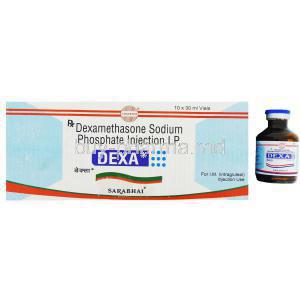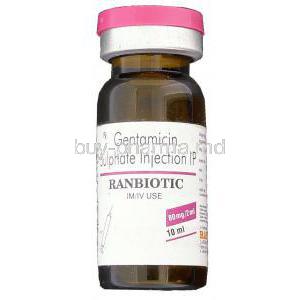Lincomycin Injection
- Introduction to Lincomycin Injection
- Composition and Properties of Lincomycin Injection
- Primary Uses of Lincomycin Injection
- Off-Label Uses of Lincomycin Injection
- How Lincomycin Injection Works
- Dosage and Administration Guidelines
- Side Effects of Lincomycin Injection
- Interactions with Other Medications
- Contraindications and Warnings
- Special Precautions in Administration
- Managing Overdosage and Handling Precautions
- Conclusion and Future Prospects
Introduction to Lincomycin Injection
Lincomycin Injection is an effective antibiotic that is crucial in treating bacterial infections. This compound has gained recognition in antimicrobial therapy due to its strong ability to combat many bacteria. In this article, we will explore the journey of Lincomycin1 from its historical origins to its present-day applications in medical practice.
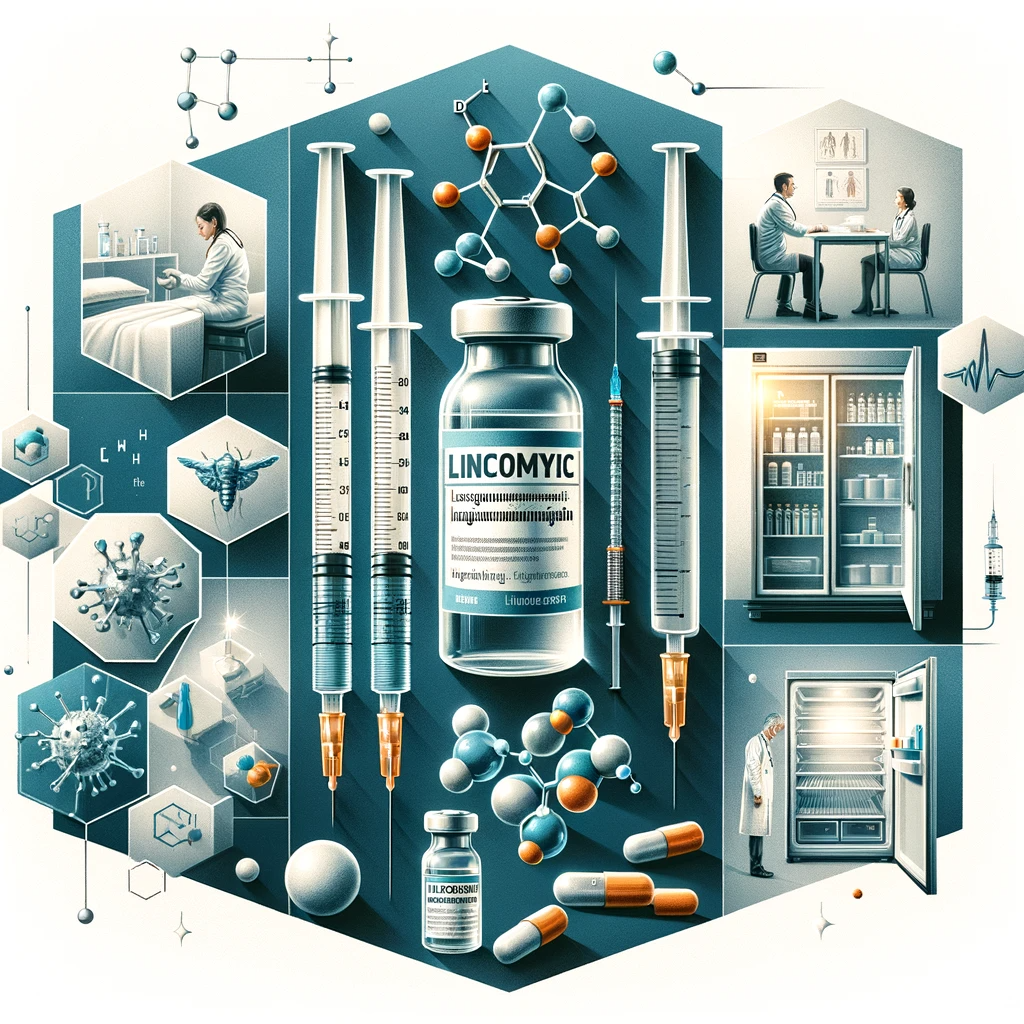
Overview of Lincomycin as an Antibiotic
Lincomycin, which falls under the category of lincosamide antibiotics, has shown effectiveness in inhibiting the growth of bacteria. It works by hindering the production of proteins in bacteria, effectively slowing down their multiplication. This unique mechanism makes Lincomycin a powerful combatant against types of gram-positive bacteria.
Historical Background and Development
Discovered in the 1960s, Lincomycin was a breakthrough in antimicrobial medicine. Since then, it has evolved with effectiveness and fewer adverse side effects.
Scope of the Article
This article offers an overview of Lincomycin Injection, highlighting its ingredients, characteristics, and main uses in contemporary healthcare.
Composition and Properties of Lincomycin Injection
The composition of Lincomycin Injection consists of a combination of active components and supporting substances. In this section, we will delve into the formulation of Lincomycin and its pharmacokinetics and pharmacodynamics, which play a crucial role in comprehending its effectiveness as a treatment.
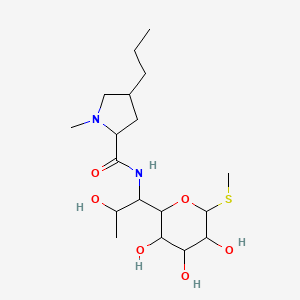
Active Ingredients in Lincomycin
The main component of Lincomycin Injection is a substance called Lincomycin hydrochloride, which plays a role in its ability to fight bacteria.
Pharmaceutical Formulation
The production of Lincomycin Injection involves a procedure that focuses on maintaining the stability and effectiveness of the drug. This process usually incorporates solvents and stabilizers to improve the drug's potency and extend its shelf life.
Pharmacokinetics and Pharmacodynamics
Understanding how Lincomycin is absorbed, distributed, metabolized, and excreted is crucial for determining the appropriate dosage regimens. Its pharmacodynamics help us know how its concentration affects bacterial cells.
Primary Uses of Lincomycin Injection
Lincomycin Injection2 is known for its effectiveness in treating bacterial infections. This section will discuss the range of conditions that lincomycin can address and compare its performance to that of other antibiotics.
Treating Bacterial Infections: Scope and Efficacy
Lincomycin is mainly prescribed for treating bacterial infections, especially those resistant to other antibiotics. It has shown effectiveness in such cases.
Specific Conditions Treated by Lincomycin
Lincomycin is commonly used to treat skin infections, respiratory tract infections, and septicemia. It is also prescribed when patients have a penicillin allergy.
Comparison with Other Antibiotics
Compared to antibiotics, Lincomycin stands out due to its distinct way of working and effectiveness against penicillin-resistant bacteria. However, it is typically used when other antibiotics are ineffective or unsuitable for the situation.
Off-Label Uses of Lincomycin Injection
Lincomycin Injection is being utilized for purposes beyond its officially approved uses in the treatment field. This section will delve into these areas, providing the natural world evidence backing up these alternative applications and the potential dangers of using them off-label.
Exploring Unapproved but Common Practices
Although Lincomycin Injection is mainly prescribed for bacterial infections, healthcare professionals sometimes consider using it for conditions that regulatory bodies have not explicitly approved. However, such practices are standard. Require a thorough evaluation of both the benefits and potential risks involved.
Evidence Supporting Off-Label Applications
Recent studies and clinical reports have indicated that Lincomycin may effectively treat unusual infections. While these reports are inconclusive, they offer some evidence supporting the off-label use of this medication.
Risks and Considerations
Starting an off-label treatment plan with Lincomycin requires an assessment of possible risks. These could involve experiencing adverse reactions or unexpected interactions with other medications, requiring close monitoring by healthcare providers.
How Lincomycin Injection Works
Exploring how Lincomycin Injection works as an antibacterial agent provides insights into its effectiveness in a clinical setting. This section will delve into its mechanism of action, its influence on resistance, and a comparative analysis with other antibiotics that share similar characteristics.
Mechanism of Action Against Bacteria
Lincomycin works by blocking the production of proteins in bacteria, which is essential for their survival and multiplication. This mechanism explicitly targets the subunit in bacterial cells, making it a potent weapon against specific types of gram-positive bacteria.
Impact on Bacterial Resistance
Lincomycin, mainly used for durations, has consequences on bacterial resistance. Although it is adequate, caution must be exercised in its usage to minimize the potential for the emergence of antibiotic strains, which is a rising concern in modern medicine.
Comparative Analysis with Similar Antibiotics
Compared to antibiotics with similar ranges, Lincomycin presents distinct benefits and limitations. Its effectiveness, range of activity, and resistance profile give it a role in antimicrobial treatment that sets it apart from other lincosamides and macrolides.
Dosage and Administration Guidelines
Administering Lincomycin Injection requires adherence to established guidelines. This section will discuss the recommended dosages for conditions, explain the technique for helping the injection, and cover dosage adjustments based on specific patient demographics.

Recommended Dosage for Different Conditions
The appropriate amount of Lincomycin to use can differ depending on the seriousness and nature of the infection and individual patient characteristics. Usually, the doses are customized to ensure the treatment results while minimizing potential adverse reactions.
Administration Techniques and Best Practices
When giving a Lincomycin Injection, it is essential to follow techniques3 to ensure the medication works effectively and the patient stays safe. It's best to choose the site for intramuscular injections and follow the proper infusion protocols for intravenous administration.
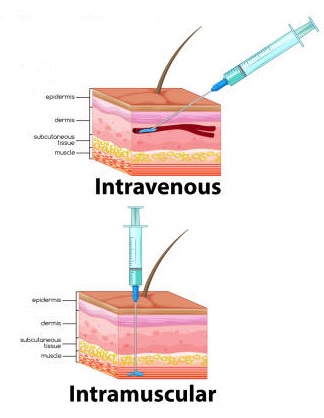
Adjustments for Specific Patient Populations
It is essential to make dosage adjustments for groups of patients like those with kidney or liver problems. In these situations, it may be necessary to decrease the dosage or change how often the medication is taken to avoid the buildup of the drug and potentially harmful effects.
Side Effects of Lincomycin Injection
Administering Lincomycin Injection to any medication may lead to specific side effects2. This section discusses the range of these effects, varying from common reactions to more severe and adverse incidents. It also emphasizes the significance of monitoring for individuals receiving treatment in the long run.

Common Side Effects and Management
Lincomycin Injection is generally well tolerated, although some patients may encounter side effects like mild gastrointestinal disturbances, skin reactions, or local irritation at the injection site. It's important to note that these reactions can usually be managed with treatment, and there is typically no need to stop the therapy.
Severe Adverse Reactions: Identification and Action
In some cases, Lincomycin may cause severe reactions such as anaphylactic shock or diarrhea associated with Clostridium difficile. It is crucial to seek medical attention to reduce the risks and avoid severe health problems.
Long-Term Side Effects and Monitoring
Using Lincomycin for some time can cause complications, like antibiotic resistance or superinfection. Monitoring and regularly assessing your health is crucial to effectively identify and address these delayed adverse effects.
Interactions with Other Medications
Using Lincomycin Injection concurrently with medications can result in interactions that might impact the effectiveness of the drug or raise the chances of experiencing unwanted side effects. In this section, we will delve into the complexities of these drug interactions4, discuss how to manage medications and explore how dietary and lifestyle factors can play a role.
Common Drug Interactions and Consequences
Lincomycin can potentially interact with antibiotics, anticoagulants, or neuromuscular blocking agents. This interaction could. Enhance or diminish the desired therapeutic effects and increase the chances of experiencing side effects. Therefore, assessing the patient's medication routine is essential to prevent such interactions.
Managing Polypharmacy with Lincomycin
When dealing with medications, especially older individuals or those with various health issues, it's crucial to handle them with care. It might be necessary to adjust the dosages, change the timing of administration, or even consider medications to ensure that treatment is safe and effective.
Interaction with Food and Lifestyle Choices
While Lincomycin is generally not affected by the majority of factors, patients need to be aware that confident lifestyle choices, such as consuming alcohol, can potentially worsen any side effects. Patients should steer clear of interactions to achieve the best possible therapeutic results.
Contraindications and Warnings
Determining which patients should not be prescribed Lincomycin Injection is a part of prescribing this medication. This section focuses on identifying groups that may be at risk, providing specific warnings1 for certain health conditions, and addressing the legal and ethical considerations involved in prescribing Lincomycin.

Identifying High-Risk Groups
Lincomycin should be used carefully and avoided by people who have had allergic reactions to lincosamides, those with severe liver or kidney problems, or individuals with specific gastrointestinal conditions.
Special Warnings for Specific Health Conditions
Individuals who have preexisting medical conditions like asthma, significant allergies, or gastrointestinal diseases need to be thoroughly evaluated and closely monitored while receiving treatment with Lincomycin. This is because there is a likelihood of experiencing severe adverse reactions.
Legal and Ethical Considerations in Prescribing
Prescribers must follow legal and ethical guidelines, ensuring that Lincomycin is prescribed only when medically necessary. It is essential to inform patients about the potential risks and benefits. This responsibility is vital to uphold the integrity of patient care and ensure public health safety.
Special Precautions in Administration
Administering Lincomycin Injection requires attention, mainly when working with vulnerable populations like older adults, expectant mothers, and children. This section provides guidelines for these situations, highlighting the importance of adjusting dosages and closely monitoring patients.
Administration in Elderly Patients
Elderly individuals frequently have medical conditions and a decreased ability to tolerate medications, which puts them at risk of experiencing adverse reactions. Therefore, it is crucial to start treatment with doses of Lincomycin in this age group and closely monitor for any indications of potential harm.

Use During Pregnancy and Lactation
Pregnant or breastfeeding women should be cautious when considering the use of Lincomycin. Although there is research on its safety in these groups, it is essential to consider the potential risks to the baby. Before prescribing Lincomycin, doctors must carefully evaluate the benefits and drawbacks involved.

Pediatric Considerations and Dosage Adjustments
In pediatric patients, the dosages of Lincomycin need to be calculated with caution, considering their body weight and the severity of their condition. It is crucial to pay attention to avoid giving too much medication and continuously monitor for any potential side effects in this vulnerable group.

Managing Overdosage and Handling Precautions
If someone takes too much Lincomycin, it is essential to seek immediate medical help. This part provides instructions on how to recognize and deal with an overdose, as well as suggestions for storing, handling, and getting rid of the medication properly to minimize its impact on the environment.
Identifying and Responding to Overdosage
Overdosing on Lincomycin can result in symptoms such as severe digestive discomfort, allergic reactions, or neurological issues. It is crucial to seek medical attention and provide the necessary care and treatment to manage such situations effectively.
Storage and Handling Recommendations
Store the Lincomycin Injection in a dry location, keeping it away from light and out of reach of children. Please exercise caution and follow techniques to preserve its sterility and effectiveness when handling the medication.

Disposal and Environmental Considerations
It is important to follow regulations when disposing of Lincomycin that is no longer needed or has expired. Proper disposal helps prevent pollution and the accidental consumption of the medication by humans or animals.
Conclusion and Future Prospects
As we examine the characteristics of Lincomycin Injection, its therapeutic capabilities, and the recommended practices for its secure usage, we eagerly anticipate future advancements in this particular area of study.
Summarizing Key Points
This article provides an overview of the various uses of Lincomycin, its effects on the body, and the precautions that need to be taken when administering it. It serves as a resource for healthcare professionals.
Future Research and Potential Developments
Ongoing research is crucial for the development of Lincomycin. The main goals are to make it more effective, minimize any side effects, and address the ever-increasing antibiotic resistance issue. By exploring formulations and combination therapies, there is a possibility of discovering novel approaches to antimicrobial treatment.
Closing Remarks and Further Resources
In summary, although Lincomycin Injection is still effective in combating infections, it is crucial to use it wisely and with proper knowledge. To stay updated on the advancements in this field, healthcare professionals and patients are advised to refer to current medical literature and pharmaceutical guidelines.






